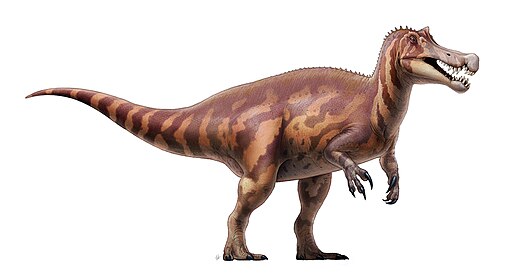The Frustrating Predator
Irritator was a spinosaurid dinosaur that lived during the Early Cretaceous period, around 110 million years ago.

| Meaning | Named for the irritation caused by fossil’s poor condition |
| Pronunciation | IR-ih-tay-tor |
| When: | Early Cretaceous (about 112 million years ago) |
| Where: | South America (Brazil) |
| What: | Theropod (spinosaurid, piscivorous) |
| Weight: | Estimated around 1 metric ton |
| Length: | Approximately 8 meters (26 feet) |
| Diet: | Piscivorous (ate fish, possibly also small animals) |
| Discovered: | First described by Martill and colleagues in 1996 |
It was named “Irritator” due to the initial frustration it caused paleontologists when its fossil was illegally altered before being studied, which led to complications in understanding its true appearance.
Irritator was a relatively small spinosaurid, estimated to have been about 7 meters (23 feet) long and weighing around 1 ton.
It had a long, slender skull filled with conical teeth similar to those of modern crocodiles, indicating a diet primarily of fish and possibly other small prey. Its jaws were elongated and equipped with sharp teeth adapted for grasping and holding onto slippery prey.
One of the notable features of Irritator was a sail-like structure along its back, formed by tall neural spines extending from its vertebrae. This sail may have served various purposes, including thermoregulation, display during courtship or dominance rituals, or even species recognition among individuals.
Fossils of Irritator have been found in Brazil, specifically in the Santana Formation, a rich fossil site known for preserving a variety of ancient creatures from the Early Cretaceous period. Alongside other dinosaurs and prehistoric creatures, Irritator inhabited a lush, tropical environment dominated by rivers and lakes.
Despite the initial challenges posed by the altered fossil, subsequent studies and discoveries have helped paleontologists reconstruct Irritator’s appearance and understand its place within the spinosaurid family. This dinosaur represents a unique example of the diversity and adaptations of theropod dinosaurs during the Cretaceous period
